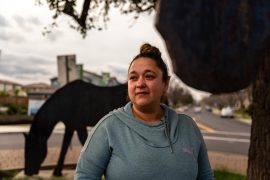When A Tragedy Saves A Life: Surge In Fatal Overdoses Is Leading To More Transplants
The opioid crisis is having a noticeable impact on organ donations, especially in hard-hit areas like New England. “Finding out that with his death someone else could benefit was such a joy," says one mother. Meanwhile, mom-and-pop pill mills are cropping up around the country, Breaking-Bad style.
The New York Times:
As Drug Deaths Soar, A Silver Lining For Transplant Patients
The surge in deaths from drug overdoses has become an unexpected lifeline for people waiting for organ transplants, turning tragedy for some into salvation for others. As more people die from overdoses than ever before, their organs — donated in advance by them or after the fact by their families — are saving lives of people who might otherwise die waiting for a transplant. (Seelye, 10/6)
The Wall Street Journal:
The Pill Makers Next Door: How America’s Opioid Crisis Is Spreading
The married couple living in the third-floor, ocean-view apartment were friendly and ambitious. She explored the city, posting selfies on Facebook. He started a small music label at home. “They were nice people,” said Ann McGlenon, their former landlady. “She’s very sweet. He’s a go-getter.” Authorities say Candelaria Vazquez and Kia Zolfaghari had darker aspirations. (Kamp and Campo-Flores, 10/5)
And in other news on the opioid epidemic —
Stat:
Kratom Ban Being Reconsidered By DEA
Affter announcing that the herbal supplement kratom would be made as illegal as heroin, the Drug Enforcement Administration is now reconsidering its decision, a US official familiar with the process told STAT on Wednesday morning. In late August, the DEA announced that it would ban the substance for two or three years, a step that it could take unilaterally in a case it deems to be a “public health crisis.” (Boodman, 10/5)
The Washington Post:
A 7-Year-Old Told Her Bus Driver She Couldn’t Wake Her Parents. Police Found Them Dead At Home.
For more than a day, the 7-year-old girl had been trying to wake her parents. Dutifully, she got dressed in their apartment outside Pittsburgh on Monday morning and went to school, keeping her worries to herself. But on the bus ride home, McKeesport, Pa., police say, she told the driver she’d been unable to rouse the adults in her house. Inside the home, authorities found the bodies of Christopher Dilly, 26, and Jessica Lally, 25, dead of suspected drug overdoses, according to police. (Wootson, 10/5)
McClatchy:
Stronger Heroin Laced With Fentanyl Prompts FDA Panel To Call For Larger Naloxone Doses
A rise in overdose deaths from heroin laced with fentanyl and other powerful additives prompted two federal advisory committees on Wednesday to recommend that the Food and Drug Administration authorize stronger minimum dosages of naloxone, the lifesaving drug that reverses the effects of opioid overdose. The FDA’s Anesthetic and Analgesic Drug Products Advisory Committee and Drug Safety and Risk Management Advisory Committee voted 15-13 to recommend increasing the minimum amount for an injectable and intravenous dose of naloxone – currently 0.4 milligram – when considering approval of new naloxone products for use outside of a hospital or medical setting. (Pugh, 10/5)
Chicago Sun Times:
As Deaths Soar, Emanuel To Boost Spending On Heroin Treatment
Mayor Rahm Emanuel wants to boost spending to combat opioid and heroin abuse — and license pharmaceutical representatives to prevent the over-prescription of opioids. A $700,000 investment in drug-treatment programs — a 50 percent increase over current funding — will be directed first to “opioid treatment deserts,” which have a disproportionate level of addiction and are largely concentrated on the West Side. (Spielman and Main, 10/5)






